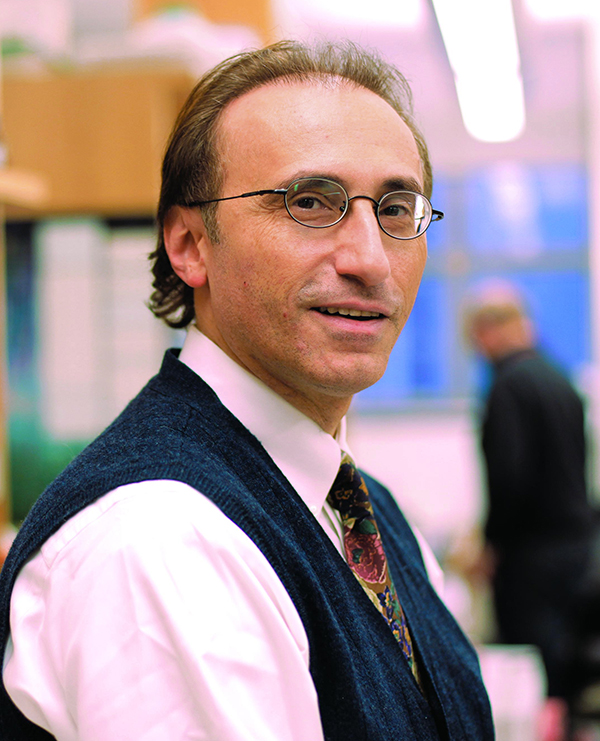New technique improves blood flow to damaged tissues
By Heather Lindsey

A gene essential for making blood vessels in embryos can transform amniotic cells into therapeutic blood vessel cells, according to new research from Weill Cornell Medicine investigators. The findings, published Jan. 16 in Nature Communications, bring scientists one step closer to safely and effectively replacing a patient’s diseased vessels with new ones by transplanting blood vessel cells into tissues and organs damaged by injury and disease.
“There’s an immense clinical need for transplantable endothelial cells, the cells that line blood vessels,” said the paper’s first author Dr. William Schachterle, an instructor in medicine at Weill Cornell Medicine. “These cells could one day help treat patients who are suffering from blood vessel and tissue damage.”
Abnormal blood flow through diseased vessels leads to heart attacks, stroke and the debilitating complications associated with diabetes. Emerging research suggests that many other diseases, even cancer, can be traced back to abnormal blood vessels, so developing a source of normal endothelial cells that could be given to patients may have even wider implications. But this has proven difficult because a ready source of endothelial cells has not been found and the means to transplant them has not been available.
In their new study, the investigators detail how the gene Sox17 can create blood vessel cells used for therapeutic purposes. The findings illuminate a way to overcome an obstacle in tissue repair: how to create transplantable endothelial cells that successfully heal tissue using practical and safe cell sources.
Ultimately, “we’re trying to develop a product to safely renew the blood supply to diseased organs,” said senior author Dr. Shahin Rafii, director of the Ansary Stem Cell Institute, the Arthur B. Belfer Professor in Genetic Medicine and a professor of medicine at Weill Cornell Medicine, who is a co-founder and consultant for Angiocrine Bioscience, a cellular therapy company. “This could potentially be a game changer.”
Current approaches to obtaining blood vessel cells aren’t ideal, said co-senior study author Dr. Joseph Scandura, associate professor of medicine and scientific director of the Silver Myeloproliferative Neoplasms Center at Weill Cornell Medicine. For example, one common approach is to use pluripotent stem cells that can develop into any cell type in the body. But scientists must manipulate pluripotent cells to turn them into blood vessel cells, a process that could be dangerous because pluripotent stem cells that aren’t fully converted to endothelial cells could form tumors.
“Even if all of the cells are converted, blood vessel cells that are created this way tend to drift and become other cell types that can do things blood vessels aren’t supposed to do,” Scandura said.
The method described in the study instead focuses on directly converting cells from readily accessible amniotic fluid so they become blood vessel cells. Compared with pluripotent cells, amniotic fluid cells are already mature cells and pose less risk if small amounts are not converted. Endothelial cells converted from amniotic cells are uniquely stable. “They don’t drift,” Scandura said. But converted amniotic cells don’t currently work well enough for therapeutic use because they have problems joining with other blood vessels and engrafting into tissues after transplantation.
The group found that adding Sox17 after converting normal amniotic cells to endothelial cells enabled the converted cells to join with and create new blood vessels. More importantly, these converted cells were able to restore blood flow to tissues with disrupted blood vessels.
One of the consequences of type 2 diabetes, for example, is damage to blood vessels because endothelial cells are unable to thrive in the presence of high blood sugar. “This can lead to tissue damage that can require the fingers and limbs to be amputated,” Schachterle said. While more research is needed, Sox17-altered amniotic cells could be injected into a diabetic patient’s circulatory system, where they find the diseased area and create new blood vessels to heal and regrow tissues. Injecting these cells directly into damaged tissue may be another option. “We’re working on this and other potential clinical applications of this innovative technology,” Scandura said.
Despite the last three decades of scientists trying to develop treatments to revascularize tissue, there is no such U.S. Food and Drug Administration-approved therapy. “Any product that can improve blood flow to compromised tissues might be able to fix the problem at its source and reduce consequences and cost of treating advanced diseases,” Rafii said. “More importantly, we hope this approach can decrease the morbidity and prolong the life of patients with end stage vascular disorders.”
Heather Lindsey is a freelance writer for Weill Cornell Medicine.
Media Contact
Get Cornell news delivered right to your inbox.
Subscribe